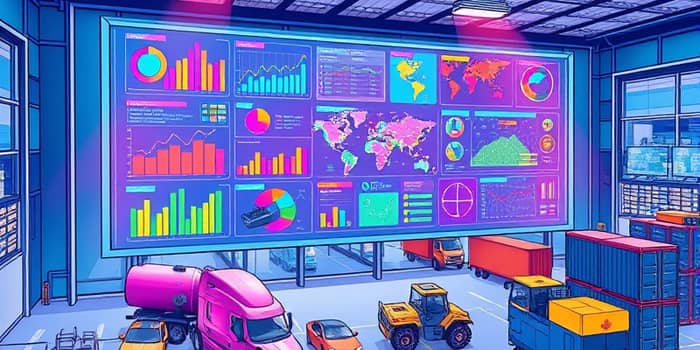
Every day, organizations juggle thousands of assets—machinery, vehicles, IT hardware, and more—spanning global sites and multiple departments. Relying on disparate spreadsheets, manual logs, or siloed systems often leads to costly inefficiencies and delays. A centralized dashboard transforms this complexity into clarity by aggregating diverse data streams into a unified interface.
Imagine a manufacturing plant plagued by unexpected machine failures that halt production lines. Operators scramble to locate the right maintenance history, service technicians search for spare parts, and executives receive delayed reports. This reactive cycle wastes time, inflates costs, and erodes stakeholder confidence.
Now picture the same plant equipped with a single dashboard that displays each machine’s health, alerts overdue maintenance, and predicts potential issues days in advance. Technicians receive proactive maintenance alerts, procurement teams replenish parts before shortages occur, and leadership makes data-driven resource allocations. What was once chaos becomes a well-orchestrated operational symphony.
Decentralized asset data creates blind spots that lead to downtime, cost overruns, and missed opportunities. A unified dashboard provides single source of truth, enabling teams to align on priorities and respond swiftly to issues. Organizations with centralized dashboards report up to a 30% reduction in unplanned downtime and a 20% increase in asset utilization.
A high-impact asset monitoring dashboard must integrate data in real time from diverse sources, present insights visually, and support detailed analysis. Key features include:
By empowering users with intuitive controls and contextual alerts, these features enable a shift from reactive maintenance to strategic asset stewardship.
Tracking the right metrics is essential to understand asset performance and plan maintenance. Typical indicators include:
Clear targets and real-time visibility into these KPIs drive continuous improvement and operational excellence.
Advances in sensing, connectivity, and computing power underpin sophisticated dashboards. Key enablers include:
Cloud deployment also reduces infrastructure burden, enabling rapid scaling and seamless software updates. Edge computing solutions further enhance responsiveness by analyzing data close to the source.
Organizations leveraging dashboards report transformative outcomes across several domains:
Improved accuracy and accountability. With automated tracking, every asset’s status, custodian, and history is logged digitally, eliminating manual errors.
Reduced theft, loss, and downtime. Real-time alerts cut downtime by up to 30% and maintenance costs by approximately 25%, according to industry surveys.
Proactive planning and strategic allocation. Visibility into lifecycle stages enables optimized procurement plans and timely asset retirements.
Enhanced compliance and audit trails. Auto-generated logs simplify audits and support ISO, SOX, and industry-specific regulatory requirements.
Increased productivity. Field technicians spend less time troubleshooting and more time executing high-value tasks.
For example, a global logistics provider decreased equipment downtime from 12% to below 4% within six months of dashboard deployment, saving over $1 million in annual maintenance costs.
While dashboards deliver significant benefits, they also introduce complexities that must be managed carefully:
Conducting a phased rollout with proof-of-concept deployments reduces risk and accelerates user buy-in.
The asset monitoring landscape will continue to evolve with innovations such as digital twins, autonomous inspection drones, and standardized APIs that promote seamless interoperability. Dashboards are poised to become even more intelligent, incorporating augmented reality for field service and machine learning models that predict failures weeks in advance.
In conclusion, centralized dashboards are no longer a luxury—they are essential for organizations aiming to transform asset management into a strategic advantage. By selecting the right features, monitoring key metrics, leveraging modern technologies, and addressing implementation hurdles, businesses can achieve remarkable efficiency gains, cost savings, and sustainable growth. Embark on your dashboard journey today to harness the power of unified asset visibility and make every decision count.
References













